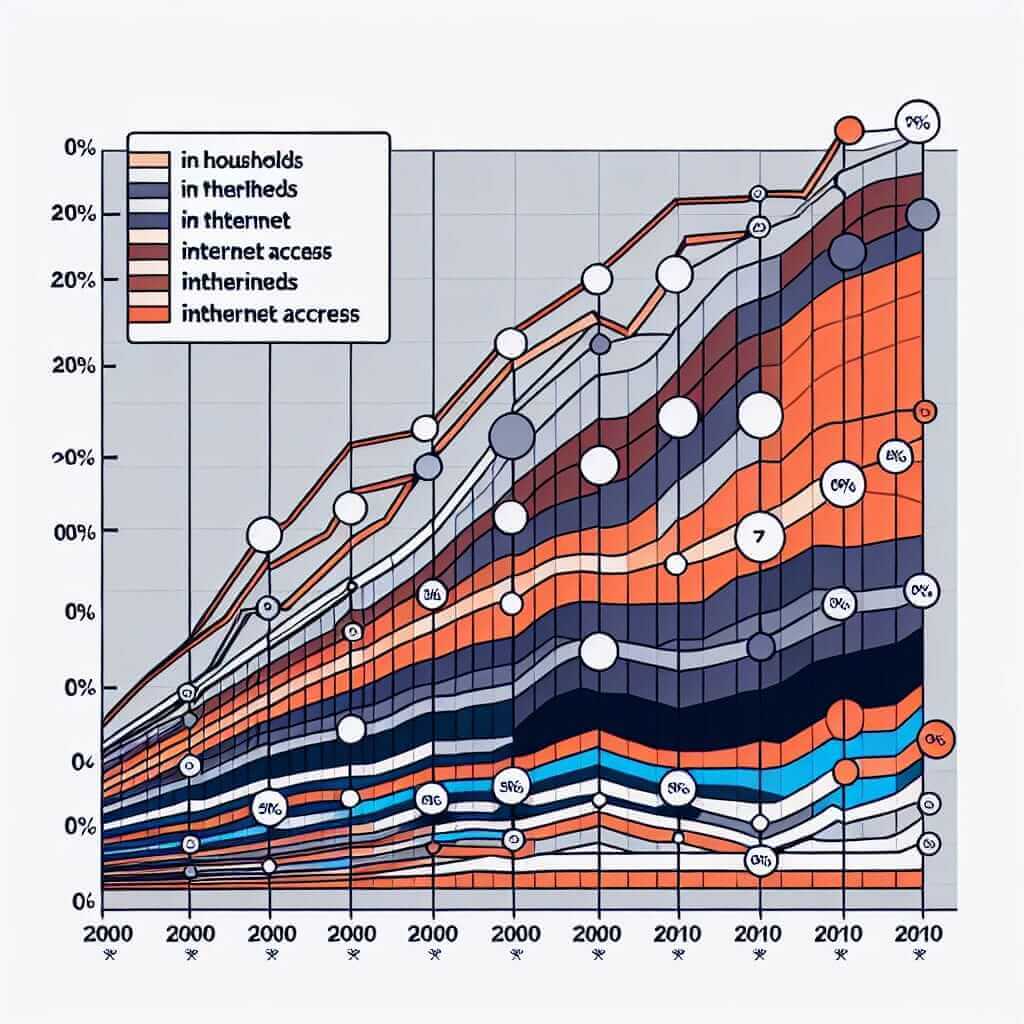The Importance of Understanding Figures in IELTS
The IELTS exam, particularly the Writing and Speaking sections, often requires you to interpret and describe visual data presented in various formats, including charts, graphs, maps, and diagrams. Effectively understanding and describing these figures is crucial for achieving a high band score. This guide provides a comprehensive approach to help you master the art of reading figures for the IELTS test.
Analyzing Different Types of Figures
1. Line Graphs:
Line graphs are used to illustrate trends over time. When analyzing a line graph:
- Identify the axes: Understand what the x-axis (usually time) and y-axis (variables being measured) represent.
- Look for patterns: Note any significant increases, decreases, fluctuations, or plateaus.
- Pay attention to units: Be aware of the units used for measurement on both axes (e.g., percentages, thousands, millions).
2. Bar Charts:
Bar charts compare different categories.
- Identify the categories: Note what each bar represents.
- Compare the heights/lengths: Analyze the differences in size between bars to understand the relationships between categories.
- Check for a legend: A legend explains the colors or patterns used to differentiate categories.
3. Pie Charts:
Pie charts show proportions of a whole.
- Look at the segments: Each segment represents a percentage of the whole.
- Identify the largest and smallest segments: This gives you a quick overview of the data distribution.
- Note any key figures: Pay attention to percentages or labels highlighting specific segments.
4. Tables:
Tables present data in rows and columns.
- Scan the headings: Understand what each row and column represents.
- Look for trends and comparisons: Identify the highest, lowest, and any notable differences within the data.
- Focus on relevant information: Select only the data points essential for your description.
5. Maps:
Maps illustrate geographical information.
- Orient yourself: Determine north, south, east, and west on the map.
- Identify key features: Locate and understand the significance of landmarks, areas, or symbols.
- Analyze changes: If the map shows changes over time, identify and describe these transformations.
Example from IELTS Writing Task 1
The chart below shows the percentage of households with internet access in different countries between 2000 and 2010.

Summarize the information by selecting and reporting the main features, and make comparisons where relevant.
In this task, you would need to:
- Introduce the type of figure and its main purpose.
- Highlight the general trends: For example, you could mention that internet access increased in all countries during this period.
- Focus on specific details: Point out the countries with the highest and lowest percentages of internet access in 2000 and 2010.
- Make comparisons: Compare the rates of increase in different countries.
Tips for Success
- Practice regularly: Familiarize yourself with different types of figures and practice describing them accurately.
- Use appropriate vocabulary: Employ a range of vocabulary to describe trends, changes, and comparisons (e.g., increase, decrease, fluctuate, rise, fall, similar to, different from).
- Be precise and concise: Use clear and concise language to convey the information effectively. Avoid using overly complex sentences or irrelevant details.
- Proofread carefully: Double-check your grammar, spelling, and punctuation to ensure clarity.
Conclusion
Mastering the art of reading and describing figures is essential for achieving success in the IELTS test. By understanding the different types of figures, practicing your analytical skills, and utilizing appropriate vocabulary, you can confidently tackle any data interpretation task that comes your way. Remember, consistent effort and strategic preparation are key to excelling in this aspect of the exam.